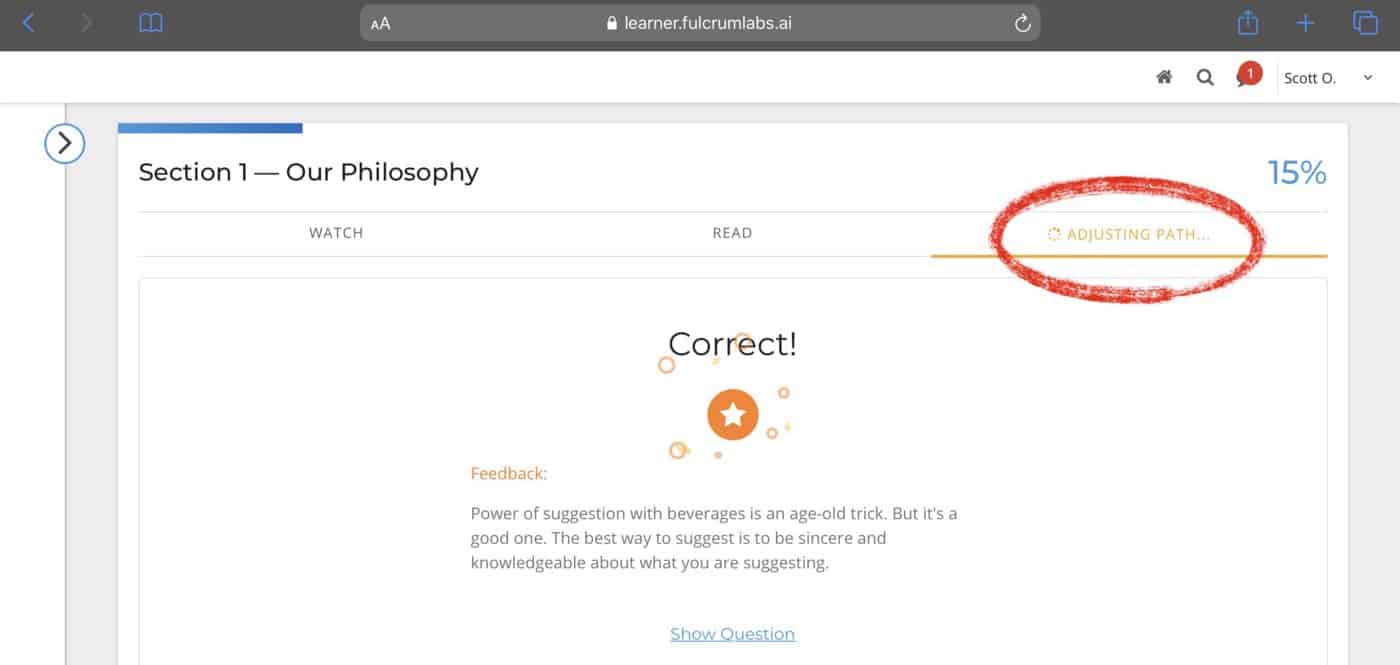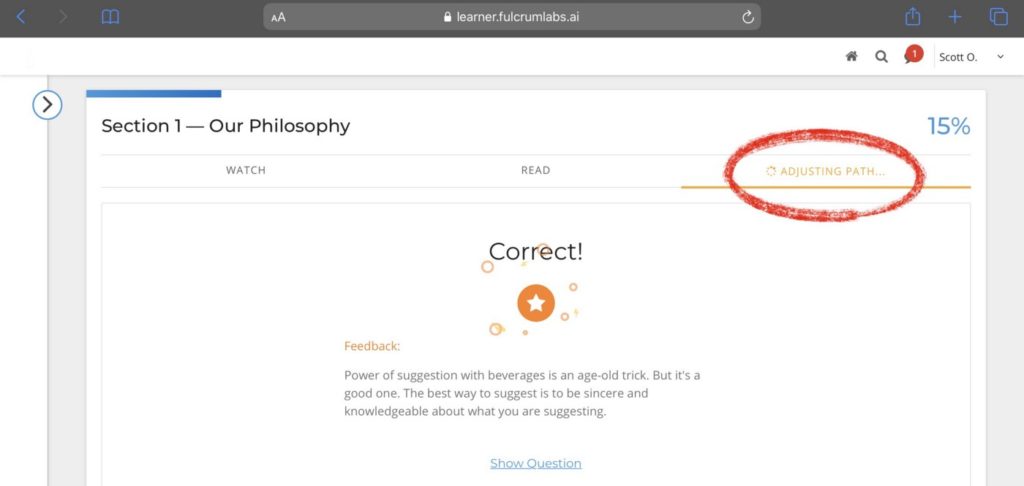
Remote Learning: Beyond Triage Mode and into the Future
Now that so many are in self-isolation, online teaching / remote learning has suddenly become a hot topic. I’d like to share my experience of where we’ve come from, where we are now, and discuss a potential rosy future that is both exciting and gives me hope. I’ve been creating online courses for more than 20 years, being something of a pioneer in the space, and have personally witnessed and participated in the evolution of distance learning and online collaboration technologies across numerous platforms.
As both a university classroom teacher and online educator, I’ve discovered what I believe is truly the future of education – something I believe should be considered by anyone looking to improve both student and teacher outcomes.
In the 1990’s and into the 2000’s, “multimedia” designers tried to simulate brick-and-mortar course curricula with eBooks, interactive tests, DVD-ROM’s and streaming video courses.
Each of these passive forms required and still require self-motivated students to assimilate one-size-fits-all knowledge and build skills on their own.
These forms tend to work better in certain subject areas such as creative, technical and business software – where students are motivated to pay to gain specific skills, which may directly boost their employment opportunities.
More recently, streaming video courses have added a Q&A feature allowing students to communicate sporadically with their instructors, who occasionally answer the written questions posed by those few students brave enough to post them, with these transcripts posted publicly. The social risk proves too much for those worried they might have a “dumb” question that will be posted for all eternity, and the public forum isn’t something most introverts – about half the population – would be comfortable with.
Self-administered assessments have also appeared on LinkedIn to certify individuals already skilled in a short list of software apps, which is slowly growing. Also, some software vendors run their own, often pricey, certification programs. I regularly see people post these certificates on public profiles and social media, celebrating their own personal achievements – sub-optimal behavior for those reluctant to engage in shameless self-promotion.
Online collaboration tools were originally developed to serve the needs of business – not education. Collaboration tools facilitated the meteoric rise of outsourcing and remote work for certain tasks, and money flows where business goes.
No one believes videoconferencing is better than on location face-to-face interaction, but in the current crisis it’s all we have, and thus has become the go-to solution. There is much competition in this space, Zoom being a leading brand on this crowded playing field. As a result, most videoconferencing platforms have become commodities free for personal use, with only larger organizations having to pay nominal fees.
In pandemic-triage mode, educational institutions have turned to Zoom and other basic file-sharing and scheduling services (i.e. Google Classrooms) en masse, in order to get virtual classes up and running. This has happened largely because of these services’ affordability, ubiquity and immediate responsiveness to crisis.
Business people, educators and students are starting to realize that being in virtual meetings many hours each day is unproductive and assumes we are all extroverts. Unless you are the speaker (a passive experience for everyone else), the overall experience is possibly a colossal waste of time, or at the very least, an inefficient use of time and human attention.
Will this crisis continue for months or years? Will it recur? No one knows with certainty. How can educational institutions efficiently train self-isolating students and businesses train or retrain their currently under-utilized employees online?
In recognizing these limitations, I set out to find a better, more sustainable and holistic solution – one that students AND teachers will like, and the good news is I think I found it. However, at this stage it’s not yet on most people’s radar.
This new alternative to online, or “remote education” harnesses what teachers, producers, instructional designers, creatives, data scientists and artificial intelligence algorithms each does best to deliver a cohesive educational experience that is greater than the sum of its parts and stakeholders.
After much research, I landed on Fulcrum Labs, a company that leverages AI and machine learning to deliver the most advanced educating platform that adapts to each student. Although I don’t work for Fulcrum, I now help produce and design courses used on their platform, to which I have added my motion graphics & character animations, making more engaging content.
The Fulcrum Labs platform adapts to each student’s learning style by letting people assimilate knowledge how they choose —whether by reading, listening to audio, and/or watching videos. After learning a new topic in their preferred uptake mode, students are tasked with answering a variety of practice questions educators and instructional designers have pre-built into the system.

Fulcrum’s proprietary AI selects precisely which human-written questions to deliver on the fly – the questions each student is presented with depends on how they performed on previous questions.
In this way the AI learns about the student and their level of understanding and the system adapts to them, rather than the other way around.
Fulcrum’s platform requires that instructional designers make extra efforts to classify each question using Bloom’s taxonomy according to its level of complexity and specificity, so that students can spend their time answering practice questions at and above their current level of understanding.
Nobody wants to be grilled about things they already know well – that’s boring. If the AI sees that you know the basics about a specific topic, it immediately moves on to pose you more challenging questions until you master the hardest among them or, miss some, and it seamlessly circles back until you get it. When you answer a question incorrectly, you are notified but the system also presents a specific hint about where you went wrong to immediately correct your thinking. When you do answer correctly, you get congratulations notification and a “good to know” message that explains why your answer was correct, helping solidify your new knowledge. These hints and meta-messages are subtle, but they effectively help learners iterate rapidly through the learning process.
Advancements in artificial intelligence combined with the hard work the team (myself included) puts into producing all aspects of these courses makes the resulting experience akin to a one-on-one tutoring situation, tailored to the needs of each individual. Producing courses on Fulcrum’s platform represents significant effort up front, prior to launch. This isn’t free and requires funding to produce high quality adaptive courses, but once they are launched, updates to the curriculum are seamless. Fulcrum is not static but continues to dynamically refine and evolve their platform.
Behind the scenes, courses can be optionally designed so that students will earn a variable number of points for each of their correct answers, depending on the questions’ classifications in Bloom’s cognitive domain. When certain point thresholds the educators set up beforehand are met, the student is rewarded with a variety of graphic badges and sound effects (customized according to subject matter, discipline and industry). Research shows that variable intermittent rewards are the most motivating and trigger dopamine releases that can be positively addictive to students.
Imagine students bingeing educational content like they binge video games and you’ll appreciate the potential that this thin veneer of gamification atop an adaptive learning platform offers.
Teachers are often wary of traditional distance learning technology, confident in their one-to-many approach in the brick-and-mortar classroom is the “gold standard” in education. However, Fulcrum’s platform shows that with thoughtful course design made personal with adaptive AI-powered practice questions, layered with the veneer of gamification, plus focused teacher-student videoconferencing sessions all together makes for a compelling, if simulated, one-on-one learning experience that in some ways may be potentially superior to the so-called gold standard.
Fulcrum isn’t the only learning game in e-town by any means.
I run my training business on a course platform called Thinkific under my own “brand” (which, in my case is simply scott.training). This has everything I need to build and deliver my video courses and memberships, complete with an interactive course interface, student dashboards, full-featured video player, quizzes, discussion groups, social media-styled “communities,” simple surveys, and completion certificates.
By the way, I don’t work for, or get any commissions from Thinkific, either. I can attest that Thinkific also integrates easy web design with a Site Builder that is similar to a WordPress theme’s use of the Customizer (if you are familiar with WordPress you’ll know what I mean, but Thinkific doesn’t support blogging and is not WordPress). Thinkific also includes fast web and video hosting, so I don’t have to pay for those additional services – which was a big selling point for me. Thinkific is a bulletproof platform for small business owners who want to provide training and/or coaching services – one that continues to suit me well.
However, Thinkific doesn’t have an AI that adapts to each student, and it doesn’t yet provide gamification features that would be motivating and fun for students. These are killer features, but they do have a significant cost per student in terms of Fulcrum licensing fees, which would need to be factored into the overall budget of larger organizations.
A key element that Fulcrum and Thinkific are both missing is live human interaction with teachers and classmates alike. As we know, this interaction can be readily facilitated in times of crisis by videoconferencing (i.e. Zoom), in webinars, or in brick-and-mortar classrooms/conference rooms during better times.
Teachers and trainers will appreciate how the Fulcrum solution automates tedious repetitive exposition and can iterate students through a battery of well-considered practice questions, helpful hints and “good to knows.” It’s worth remembering that all that helpful content has to be written, edited and authored into their platform, which can be a comprehensive undertaking for any team.
Fulcrum’s platform automatically produces a wealth of back-end analytics that instructors and managers can view in real-time to see precisely not only how each student or employee is performing, but in which areas they are specifically challenged. This data supercharges teachers by feeding them relevant info about each student at just the right time, so that live teacher-student interaction can be highly optimized.
No longer would your relationship be mediated by hours of shared video-conference boredom, but by focused, relevant exchanges. Imagine teachers being able to spend more time mentoring, facilitating challenging projects, motivating students by honoring their hard work, and making their achievements socially relevant – in other words, doing what they do best.
In my opinion, all these advancements leverage the best in today’s technology AND human interaction. I wonder if this could become the new normal?
Why go back to the 19th century models of one-size-fits-all mass instruction when 21st century adaptive tech, thoughtful instructional design, gamification, and focused student-teacher live interaction can accelerate the learning process, improve engagement and improve learner outcomes?
If your business or institution has a budget to improve the quality of the training they deliver in the current and future states of the world, you won’t have to (or perhaps even be able to) go back, but can actually move forward – and that is really exciting!
In education, this translates to higher comprehension and graduation rates. In business, this translates to a safer workplace, a better trained workforce, improved bottom line, and a shorter path to scalability. Fulcrum Labs is also the winner of 19 consecutive Brandon Hall Awards for excellence in eLearning – an unprecedented winning streak in the industry.
In summary, I believe 21st century learning can be crafted in such a way that weaves the best that designers, teachers and tech offers – something students have never really seen before. Instead of reflexively reacting to changing conditions, consider intelligently acting on this knowledge and not only preparing for, but being positively enthusiastic about the future of online teaching. It’s what we make of new situations that matters. This potential revolution in remote learning can take us beyond triage mode and deliver high quality educational experiences, leaving educators in ready position the next time a crisis like this hits.

About the Author:
Scott Onstott has over 20 years experience creating online courses. In addition to instructional design and pro recording he is an expert in post-production and lately has been making puppet character animations combined with motion graphics to produce uniquely engaging educational content. Scott is available to produce your courses on Fulcrum Labs’ best-in-class platform. He has taught over a thousand students face-to-face at the Academy of Art University in San Francisco, University of California Extension and SF State University. His online courses have been viewed by millions on LinkedIn Learning, Lynda.com, Udemy, Skillshare and his own site, www.scott.training.
